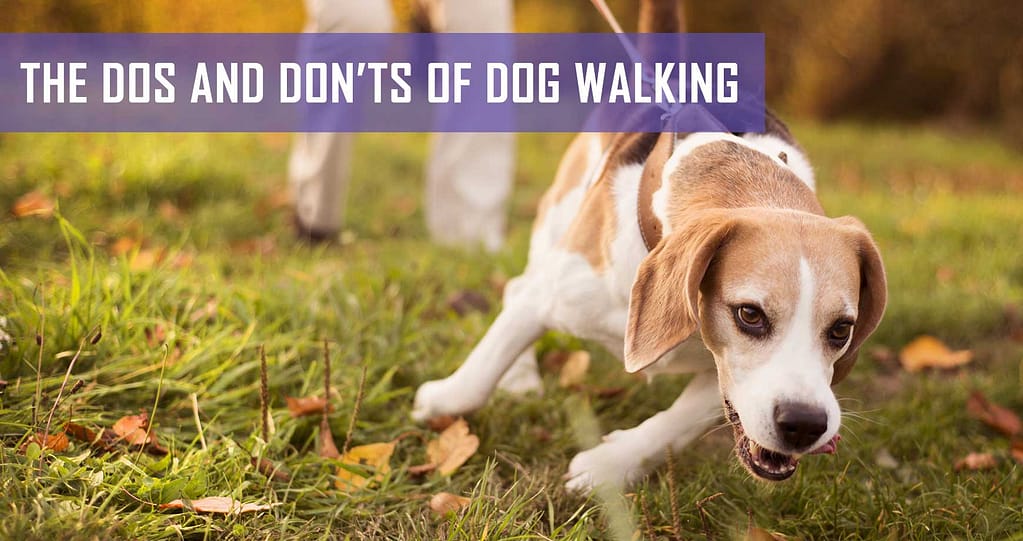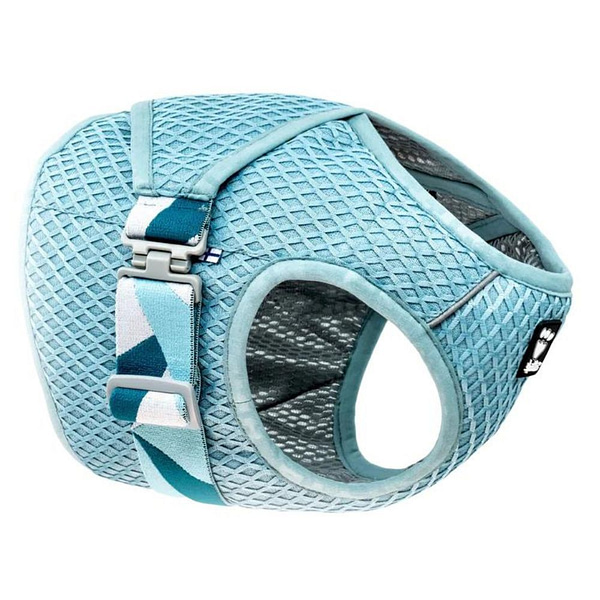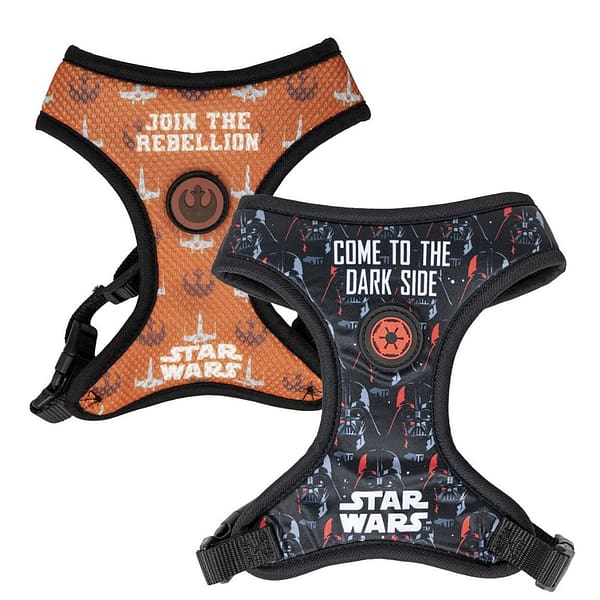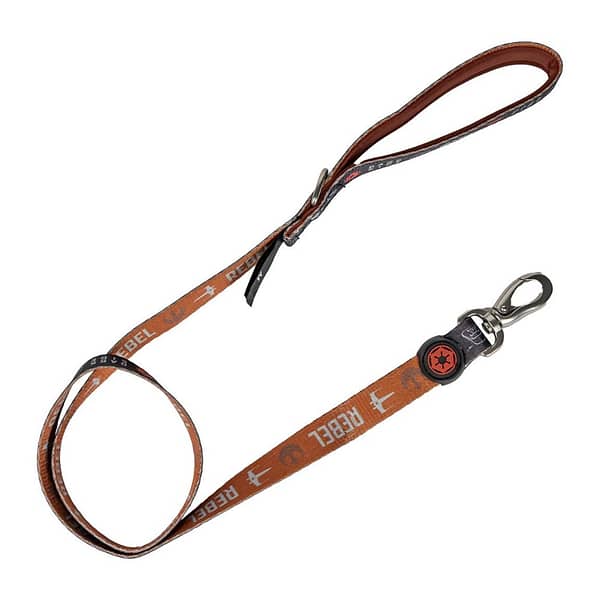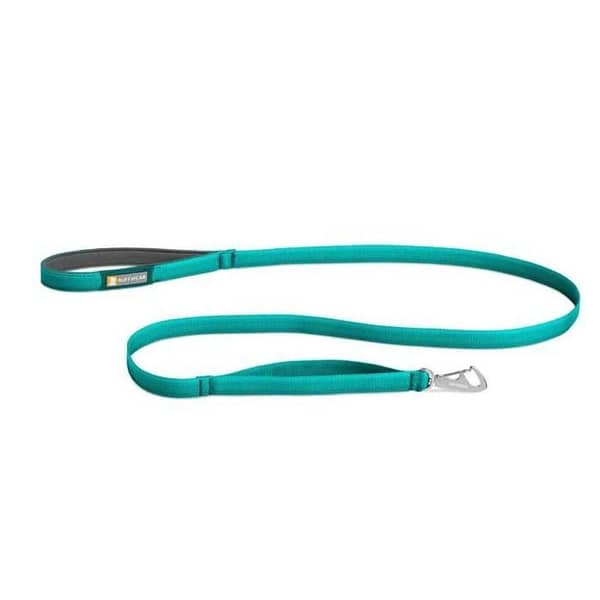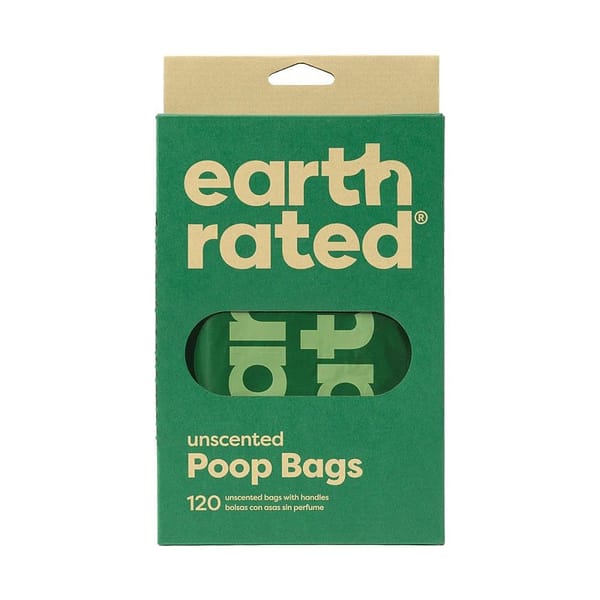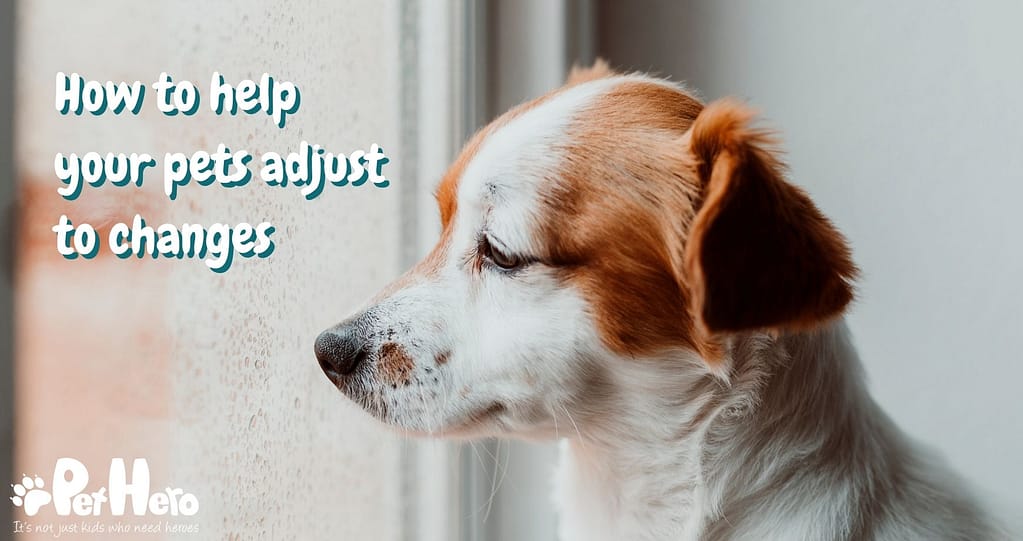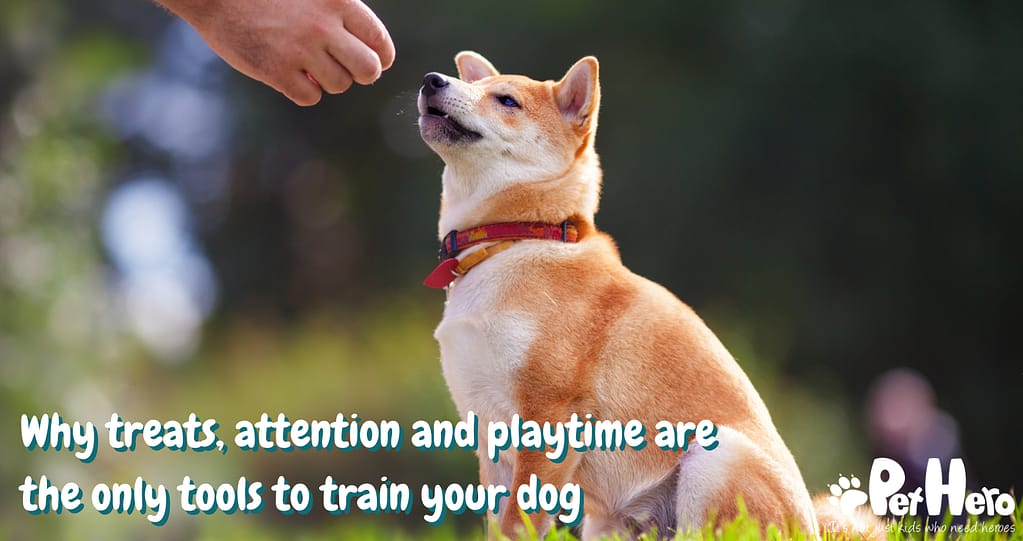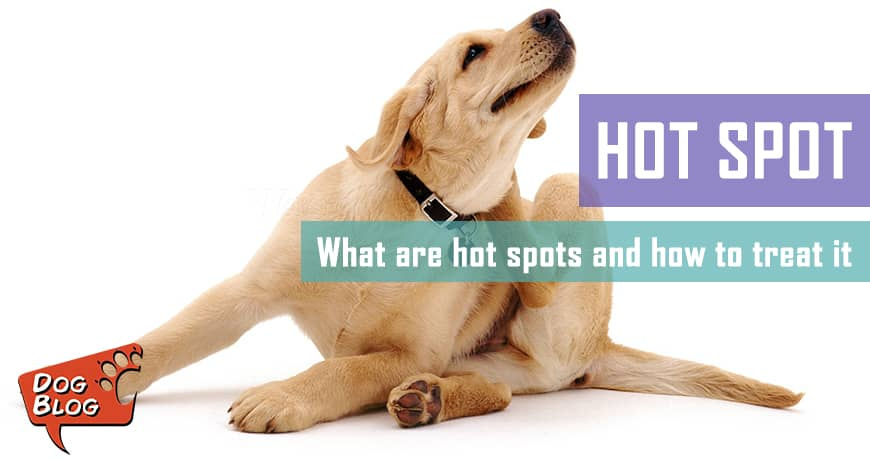Taking your dog for a walk is seriously one of the greatest joys of having a furry companion. The two of you out gallivanting in the world – what could be more fun? (That’s a petorical question!) The only catch is that for a dog to be an upstanding member of society and a trustworthy sidekick out in public, they need to adhere to a certain dog walking etiquette… as do you.
We naturally assume that leash + collar + dog + walking shoes = dog walk, but there are a couple of impawtant questions to answer before you leave through the front door and head off to the park. What should I do while walking my dog? And sometimes even more importantly: What should you not do when walking a dog?
Here’s a little refresher on the etiquette of dog walking.
1. Your dog must be on a leash
The reliable dog leash serves many purposes: it keeps you in control of your dog and it keeps your dog safe in public. Does this sound familiar? “Oh, my FeeFee is SOOO obedient! I don’t need to put her on a leash when we go for a walk!”
There are times and places where your dog can happily frolic and run around off her leash, such as at a designated dog park. Even if her recall is spot on every time, you cannot prepare for every possible situation while on a dog walk. There’s no telling what may trigger your dog to run off or to get in a scuffle with another dog – especially a dog who is on a leash.
“But my dog hates being on a leash!” If your dog pulls ferociously on a normal collar and leash, they may injure their neck and throat. Pawtunately, there are some effective training tools – like a harness or Halti collar – to assist while you implement some loose-leash training. Try it! It may also help to consider which is better for your dog – a collar or a harness. (Read our article, which covers all the pros and cons of collars vs harnesses)
2. You must pick up your dog’s poo!
Exercising your dog has the helpful side effect of encouraging her digestive system to work. This means that when you walk her, your dog is likely to decorate the pavement with a doggy ‘status update’. Please pick up your dog’s mess to prevent someone else from stepping in it – put yourself in their (now poopy) shoes. One stepped-in dog poo gives ALL dog owners a bad name. Also, contrary to pupular belief, dog poo is not environmentally friendly and contains lots of pathogens that shouldn’t be dispersed in public, so just do the right thing…
Buy a handy poop bag dispenser that clips onto your dog’s leash or even onto your belt. This will ensure you’re always prepared on dog walks. The convenience of carrying poop bags makes itself very evident when you next pass a public rubbish bin… just drop the full bag in. Again: simple!
3. Be respectful of the greater public
The implication of ‘public’ is that the space belongs to everyone, so you should treat it as you would want others to treat it: respectfully. We know how much you love your furry friend, but not everyone else will, so don’t let your dog approach other people and dogs without their consent. It’s easy to read the body language of people who don’t want to be approached: they’re the ones who aren’t smiling when they see your dog.
Similarly, keep your dog off other people’s property – don’t let her use their garden gnome as a pee post, or their agapanthus as a ‘drop zone’. See #2 above about picking up her poop. It’s rude to be on someone else’s property uninvited – quite simply, this is trespassing.
4. Know your responsibilities
You are responsible for your dog’s behaviour – any of it; all of it. Being responsible requires active attention, so don’t zone out and amble along while your dog does her own thing. She should be walking on a leash, next to you, while you keep aware of your surroundings: approaching cars, approaching dogs, approaching people and just your and her safety in general.
If your dog gets agitated, barks and lunges at other people and dogs, don’t try to continue on your walk as normal. Distract her with treats and try to calm her down, but if that’s unsuccessful, rather keep others’ safety in mind and head straight home. Ask your vet to refer you to a canine behavioural specialist as soon as possible and rectify the problem.
5. Quick tips for dog walking
- Keep some dog treats in your pocket. Let your dog know they’re there and give her a treat every time you feel proud that she’s behaving well in public. If her attention wanders, remind her of the treats and keep her attention focused on you.
- Don’t allow your dog to bark at other people and dogs. Hush her immediately.
- Don’t approach random strangers and their dogs – some dogs aren’t as friendly as yours. Unfriendly dogs may be post-surgery, they may have PTSD or any other medical conditions, or they simply don’t like other dogs, and that’s perfectly okay. Don’t take it personally if another dog owner asks you to keep your distance.
- If yours is the unfriendly dog, make it clear to strangers that she is not to be approached. Either put a warning bandana on her, or be assertive about her before others approach. Simply call out: “Please give us space” or “Sorry, my dog is anxious around strangers” and avoid the confrontation by crossing the road or changing direction. It’s not rude – it’s responsible.
- If your leashed dog needs her space and an unleashed dog approaches you, it’s necessary for you to remove your dog from the situation. If it’s possible to do so, pick your dog up to put her out of harm’s way. The ambush may be the other dog owner’s fault, but your dog’s wellbeing is still your responsibility. Call off the other dog with an assertive “Go home!” or “Off!”
- Start off your dog walk with a good intention and a relaxed attitude – your dog will pick up on your ‘vibe’ and act accordingly.

